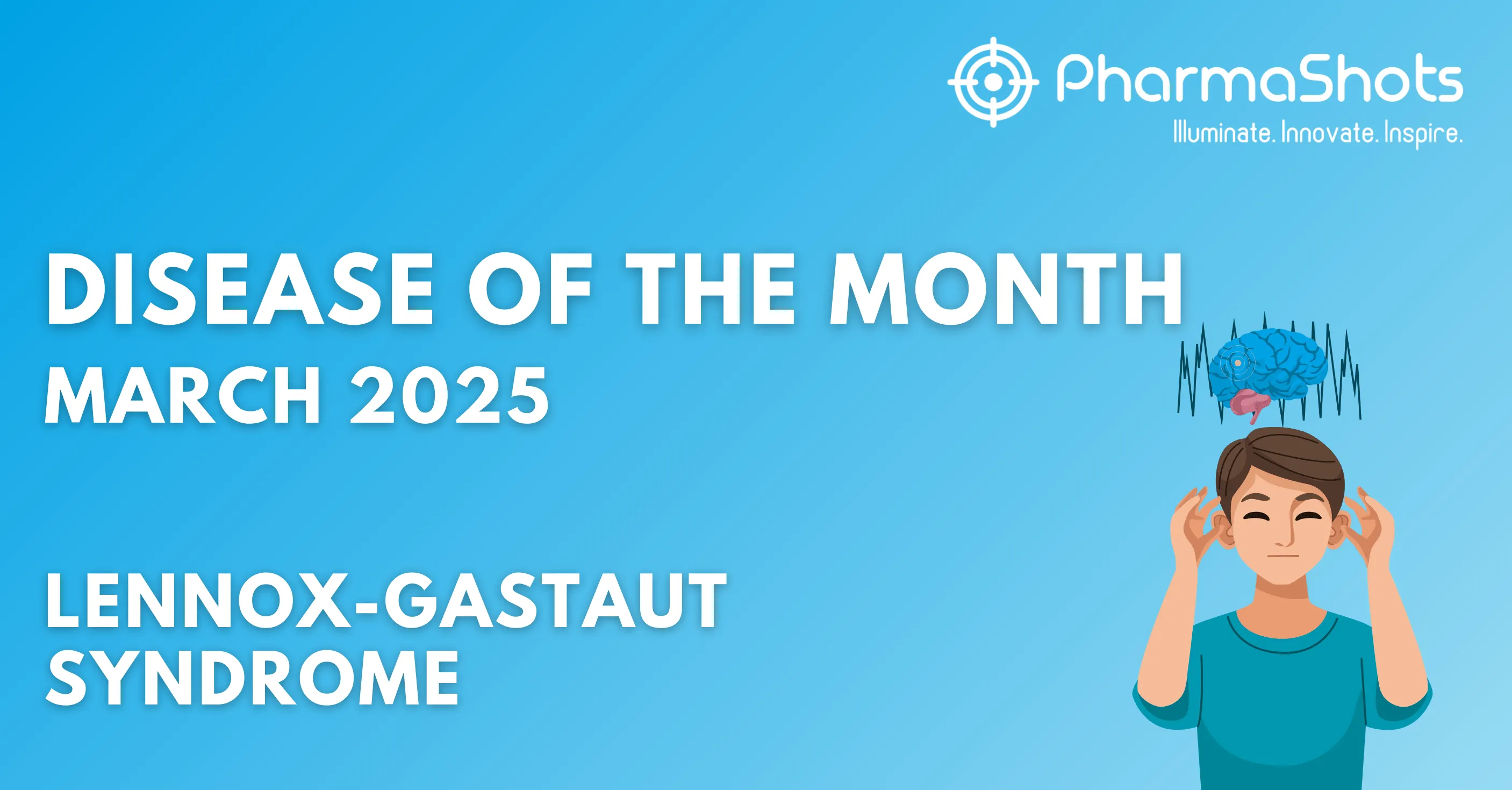
Disease of the Month – Small Cell Lung Cancer
Shots:
- Small cell lung cancer (SCLC) aka Oat cell carcinoma is a rare & fast-growing lung cancer and ~15% of bronchogenic carcinomas are SCLC
- In this reprise of our Disease of the Month report, we bring an illuminating account of SCLC with a dive analysis of epidemiology, market size, disease management, available therapies, patient advocacy groups, and the key players involved
- For a deep dive landscape, please mail us at connect@pharmashots.com
SCLC is a neuroendocrine carcinoma, characterized by aggressive behavior, fast growth, early diffusion to remote locations, exquisite sensitivity to radiation and chemotherapy, and a frequent correlation with various paraneoplastic syndromes such as Eaton-Lambert syndrome, hypercalcemia, syndrome of inappropriate antidiuretic hormone (SIADH) secretion, and numerous others.
Types of SCLC1,2
There are two main types of small cell lung cancer:
- Small cell carcinoma: This is the most common form of lung cancer and is also known as oat cell cancer because of its appearance.
- Combined small cell carcinoma: Its tumors possess traits from both non-small cell and small cell lung cancer as well as account for 2% to 5% of all cases
Small Cell Lung Cancer Stages
SCLC is divided into two stages:
- Limited stage: Cancer confined to one side of the chest, or may have spread to the area between the lungs or adjacent lymph nodes
- Extensive stage: When cancer spreads to other body parts
Symptoms1
The symptoms of SCLC are:
- Chest pain
- Chronic cough
- Hemoptysis
- Shortness of breath
- Swelling of the face
- Fatigue
- Hoarseness
- Loss of appetite
- Swollen neck veins
- Weight loss
- Wheezing
Causes1,2,8
Smokers are at greatest risk of getting affected with SCLC along with those exposed to passive smoking
Additional causes are as follows:
- Radiation exposure via imaging scans
- Exposure to certain carcinogens such as radon gas, tar, nickel, arsenic, asbestos, or other substances at work.
- Family history of having a lung cancer
- HIV (human immunodeficiency virus) infection
Diagnosis1,2,3
Chest X-rays are the initial step with further diagnosis as follows:
- Imaging scans: CT, PET & MRI for lung cancer detection
- Biopsy: A tissue sample is examined for cancer cells
- Bronchoscopy: Lungs' airways are examined for tumors using a bronchoscope
- Sputum cytology: Phlegm from the cough is examined under a microscope
- Thoracentesis: Fluid around the lungs is collected for diagnosis
- Thoracoscopy: The chest is examined through a tiny incision using a camera
- Mediastinoscopy: To examine lymph nodes in the chest using mediastinoscope
Epidemiology4
In 2020, there were 227,875 incident cases of lung cancer in the US and approximately 2.2 million cases worldwide, with SCLC accounting for about 14% of these cases. Globally, over 250,000 people are diagnosed with SCLC annually.
Market Size5
The global SCLC market size was valued at $4.6B in 2022 and is forecasted to reach a value of $12.9B by 2031 at a CAGR of 11.9% between 2023 and 2031

Management and Treatment1,2
- Chemotherapy
- Surgery
- Immunotherapy
- Radiotherapy
Product Dashboard5
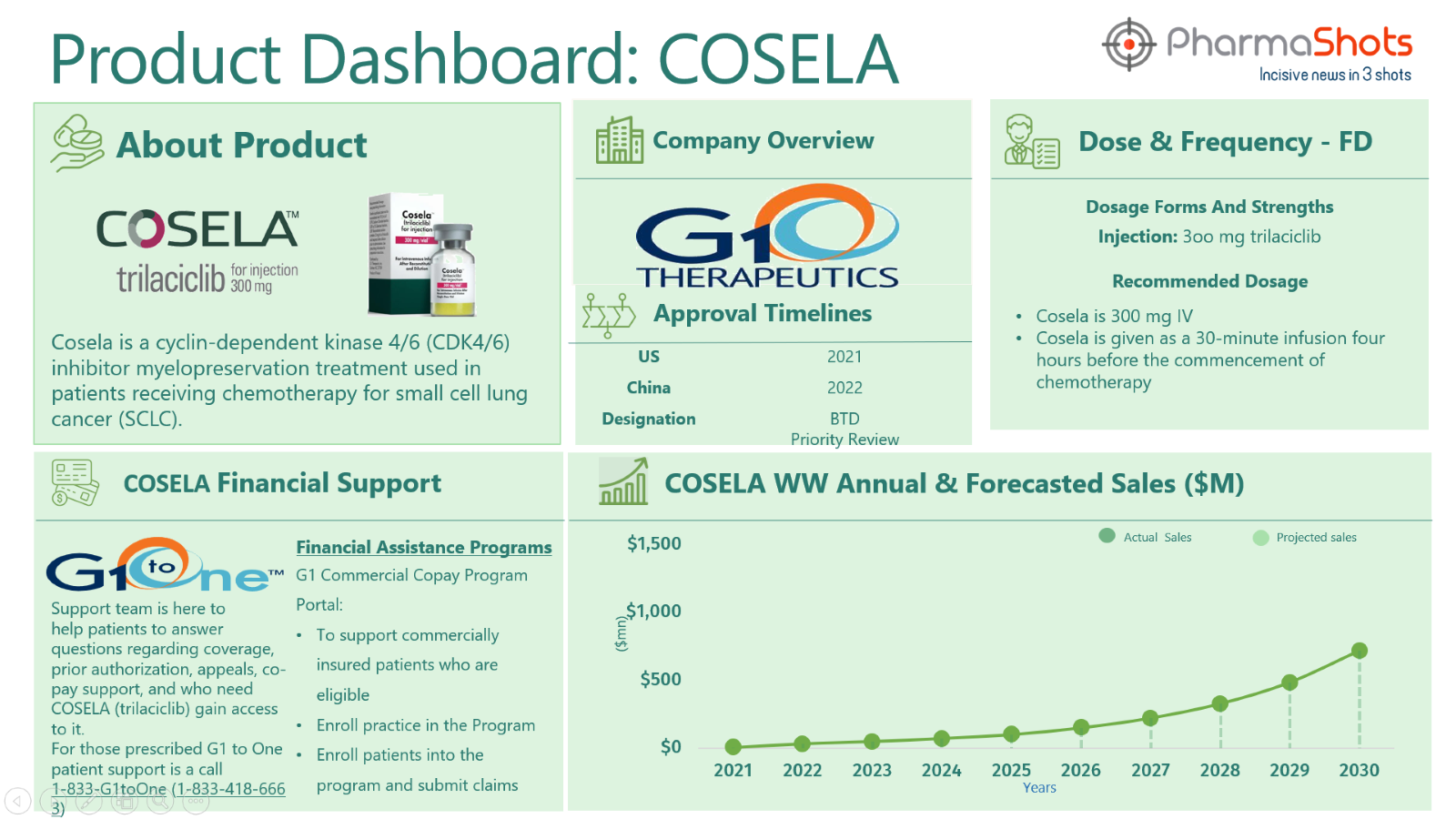
Approved Drugs in the Market
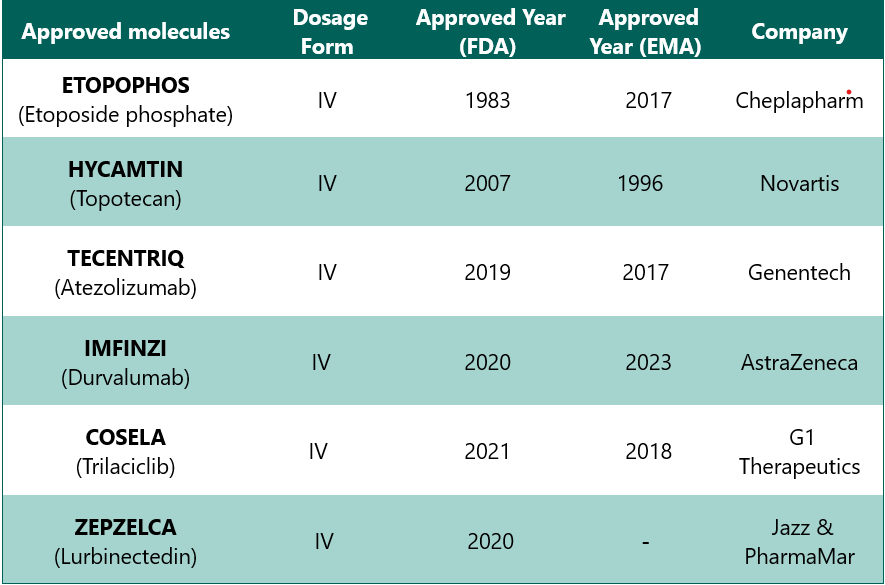
Clinical Trial Analysis7
Based on the geographical distribution, the interventional and industry-sponsored clinical trials are classified in the below-mentioned graph into two groups based on their status: Active (recruiting; active, not recruiting; not yet recruiting; enrolling by invitation and suspended) and Inactive (withdrawn; terminated and trials with unknown status)
The maximum number of active trials is being conducted in the US, Australia, UK, Canada, Italy, Germany, Spain, China (as represented in the graph)
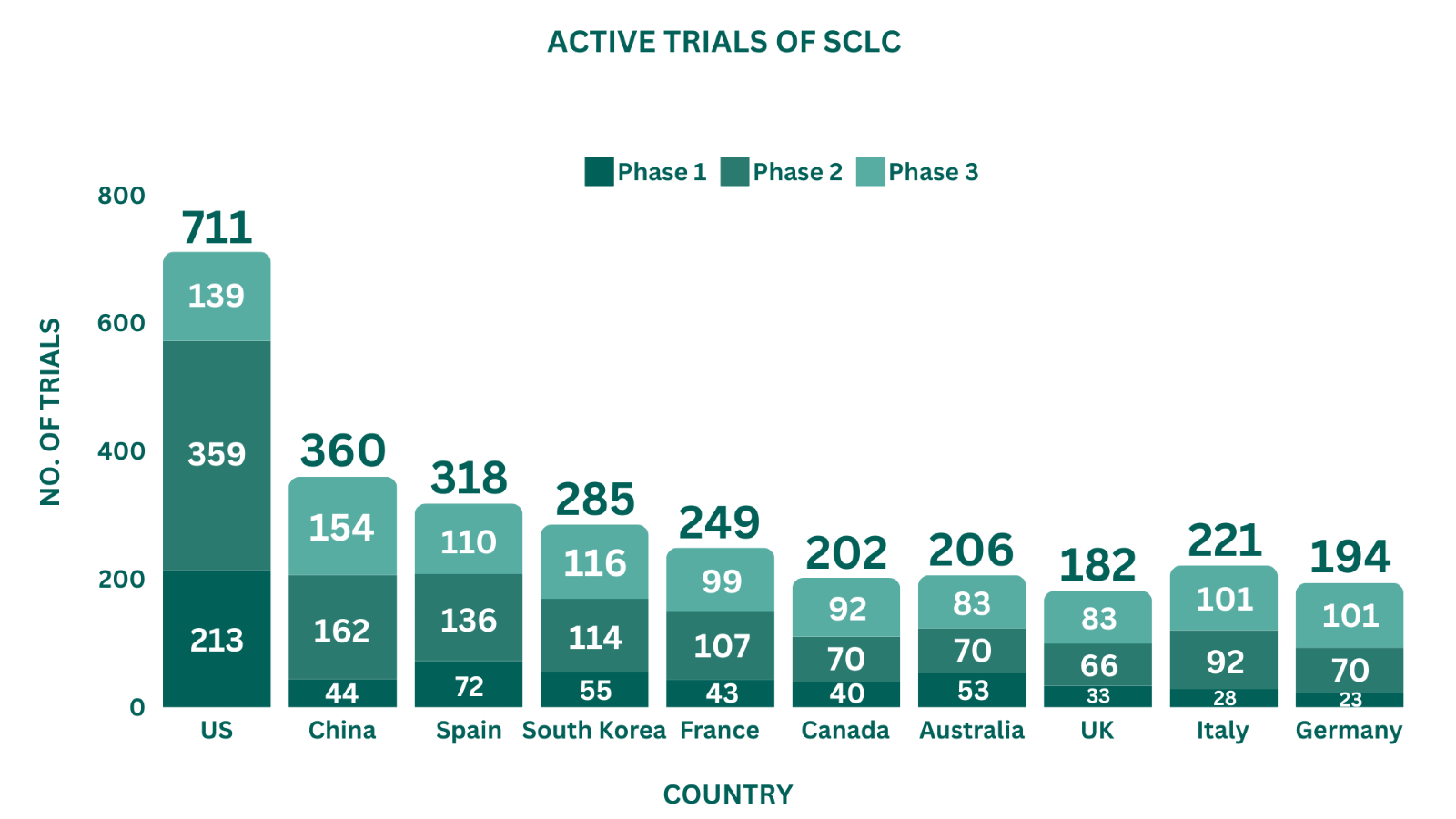
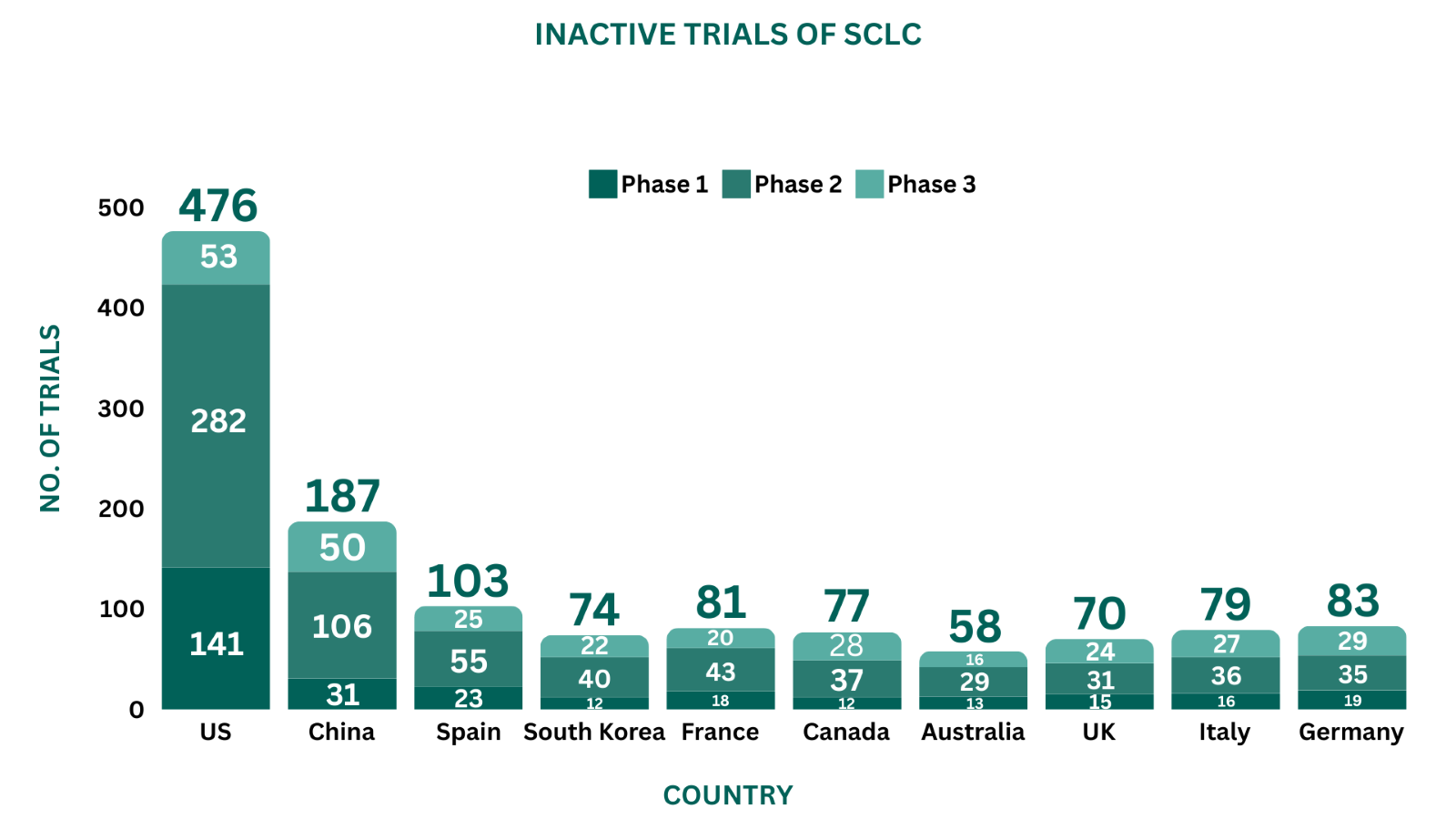
Patient Advocacy Groups (PAGs) for SCLC
Patient advocacy in Small Cell Lung Cancer bridges the gap between cancer research and unmet patient needs. Several advocacy groups operate globally as a voice for millions of small cell lung cancer patients.
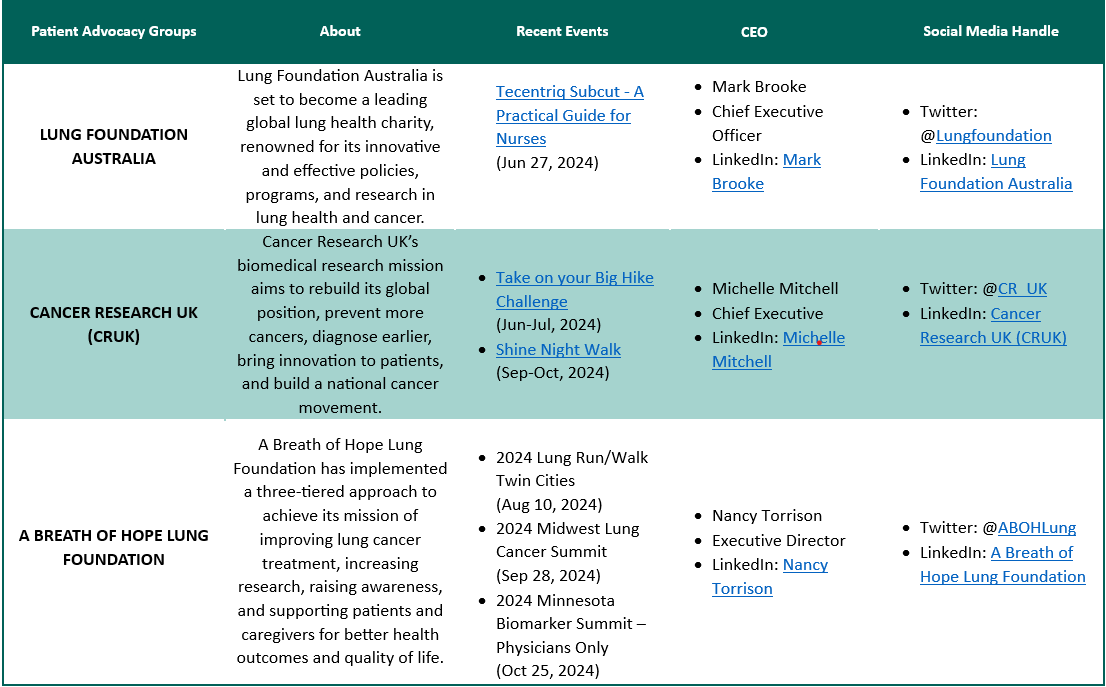
Patient Story10
-
Montessa
Back in 2006, Montessa Lee, a special education teacher, complained of a pain in the chest. When she underwent a chest x-ray, she found out that three-quarters of her lung was covered with a melon-sized tumor. Physicians performed an open chest biopsy where the results of a CT-guided biopsy were inconclusive. Despite being a vegetarian and a non-smoker, Montessa developed small-cell lung cancer.
Right before Christmas, Montessa received her diagnosis and had to stay in a hospital after New Year’s Eve. As a standard care, Montessa received radiation and chemotherapy. Her scans came out clear after she completed six rounds of treatment and have remained the same ever since. She routinely scans herself every six months and is followed by a survivorship team.
References
- Cleveland Clinic
- WebMD
- Cancer.Gov 1
- Science Direct.com
- Yahoo finance
- COSELA PI
- Cancer.Gov 2
- ClinicalTrials.gov
- Medscape
- LCFAmerica
Related Post: Disease of the Month – Fabry Disease
Tags

A passionate content writer with expertise in delivering high-quality and engaging content, Dipanshu is a keen reader and a versatile writer. Dipanshu dedicatedly covers news ranging from biopharma, life sciences, biotech, and MedTech to diagnostics and animal health companies, FDA, EMA, and biosimilar approvals. He can be contacted at connect@pharmashots.com









